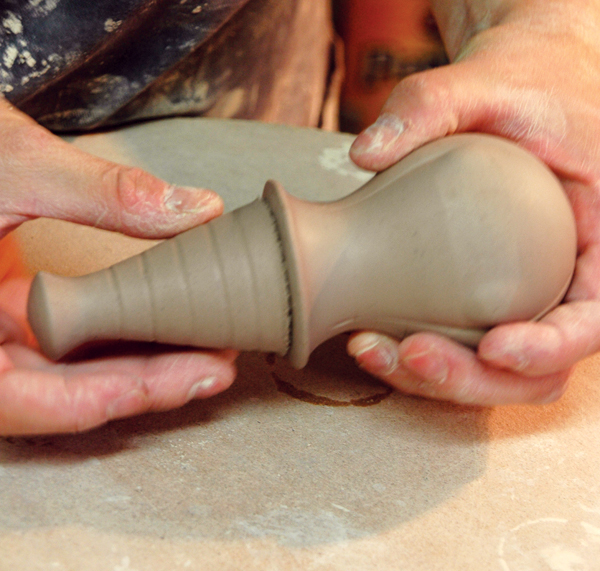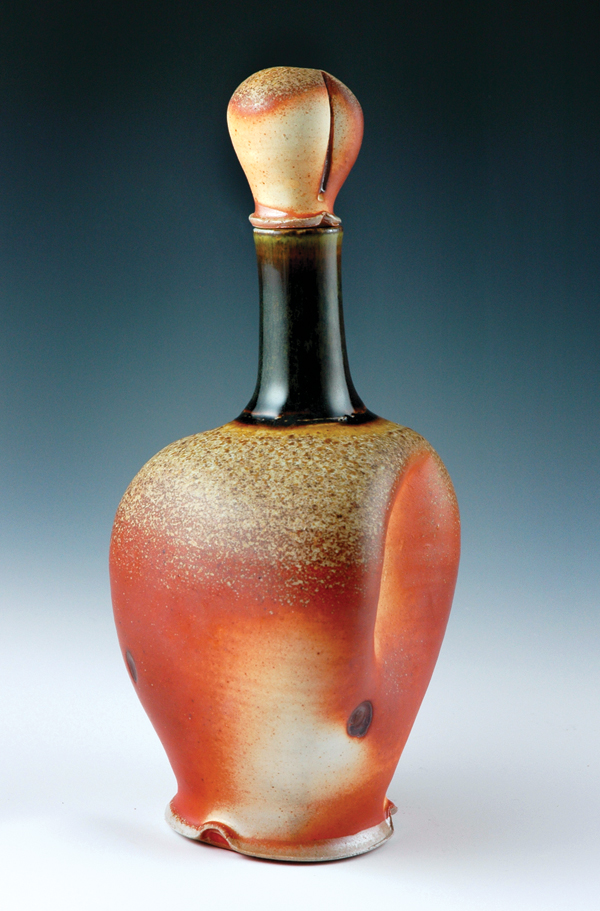
Throwing clay decanters and bottles can be a good way to challenge yourself when you become proficient at pottery wheel throwing. While some people may opt for a cork stopper, Tabatha Trolli-Diloreto prefers making her stoppers out of clay so that her bottles and stoppers hang together.
In today’s post, an excerpt from the Pottery Making Illustrated archive, she shares all the details on how she makes the stopper component.
Throwing the Stopper Parts
For the bottom part of the stopper that extends into the bottle, throw a few pounds of clay off the hump (1), into a closed hollow form approximately 1 inches tall and eye the width of your bottle opening. Imagine the top of a baby’s bottle for the form. I close the form by pulling up until my finger no longer fits inside and then shape and close using my metal rib and fingers. At this point measurements are all by eye. The surface on this portion is either smooth or sometimes textured with a descending spiral (2). Addressing the surface can help it aesthetically relate back to all the other elements of the piece. Cut it off the hump.
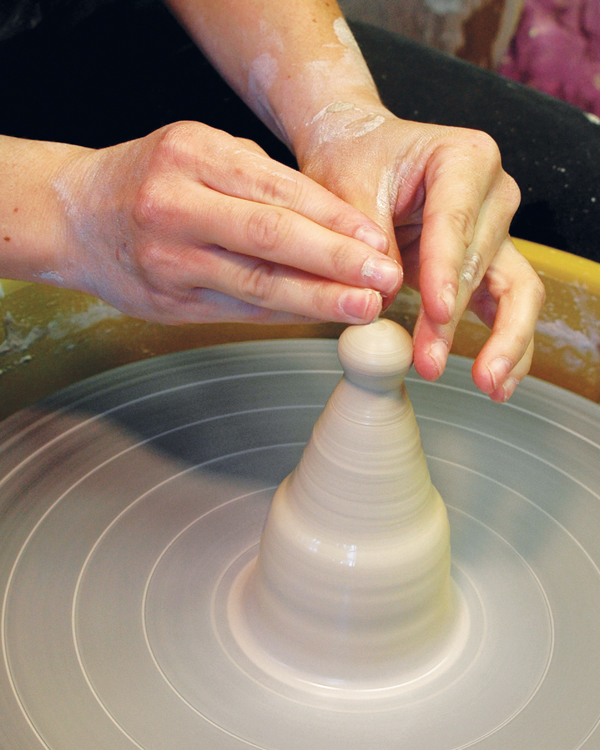
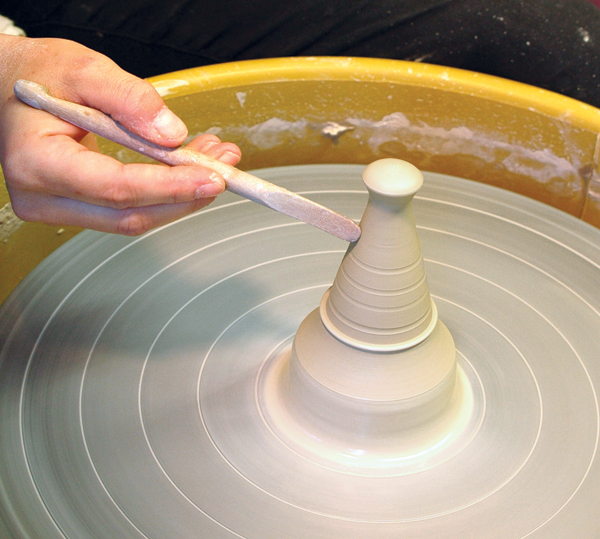
I like to throw multiple stoppers, so I’ll have different proportions to choose from when pairing them with the bottle form. Set these aside until they are ready for assembly.
To create the bulbous top of the stopper that will be seen above the rim of the bottle, throw a bottomless dome form using a little less than 1 pound of clay on a bat. This will be a closed dome that is tapered at the base of the form (3, 4). Let the top firm to a little less than leather hard.
In order to create corners on the stopper that will relate to those on the bottle, while the wheel is spinning, use an X-Acto knife to make a circular cut through the top, wide enough to fit the end of a wooden trimming tool.
Tip: It’s helpful to make a registration mark between the two pieces before removing the cut segment, so it fits perfectly when it comes time to replace the cap. Trim the topper right side up while it’s still connected to the bat. Using calipers as a guide, measure the opening of the bottle and the base of the trimmed topper.
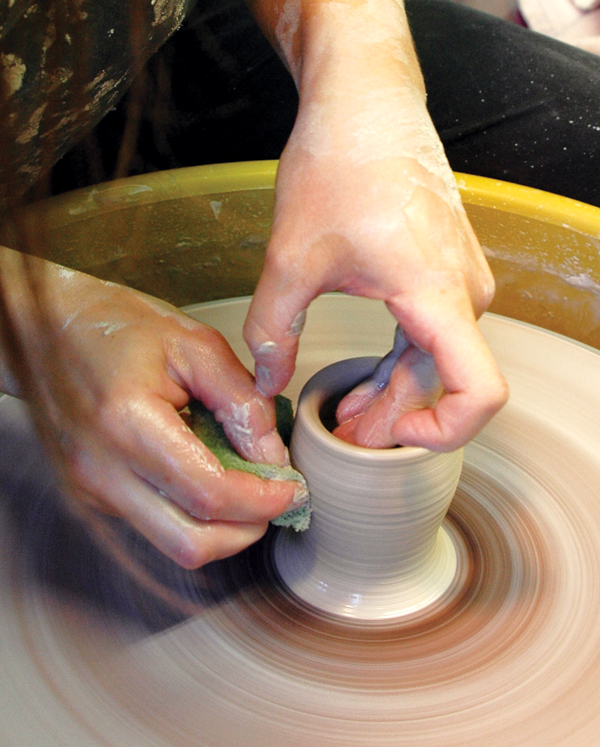
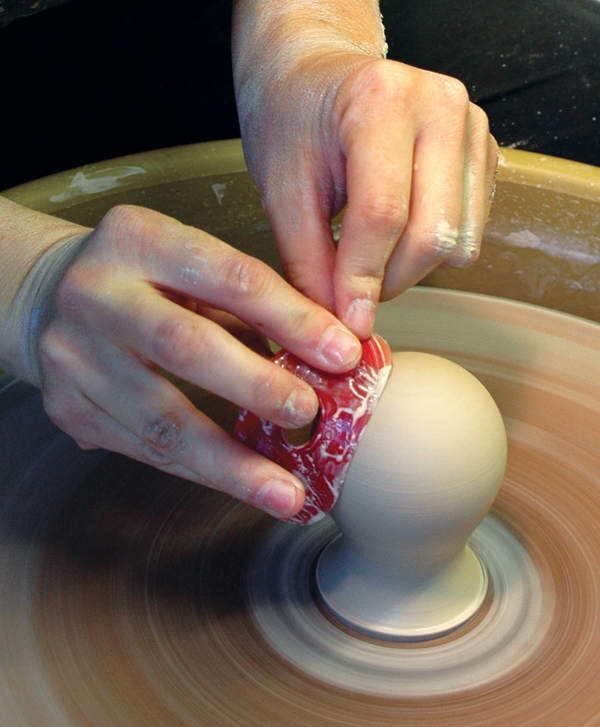
Using the same wooden tool as you did for the bottle, push out four corners that will relate to those on the bottle (5). Score, slip, and reattach the top, then use a soft rubber rib to blend in the cut line. Set this form aside.
Finishing the Stopper
Next, use the neck of the leather-hard bottle to do a dry fit of where the stopper bottom needs to be cut (6). Decide where to make the cut according to how the stopper fits into the neck. Avoid having the bottom portion of the stopper extend above the line of the rim. Mark the line, then use an X-Acto knife to make a level cut all the way around the stopper.
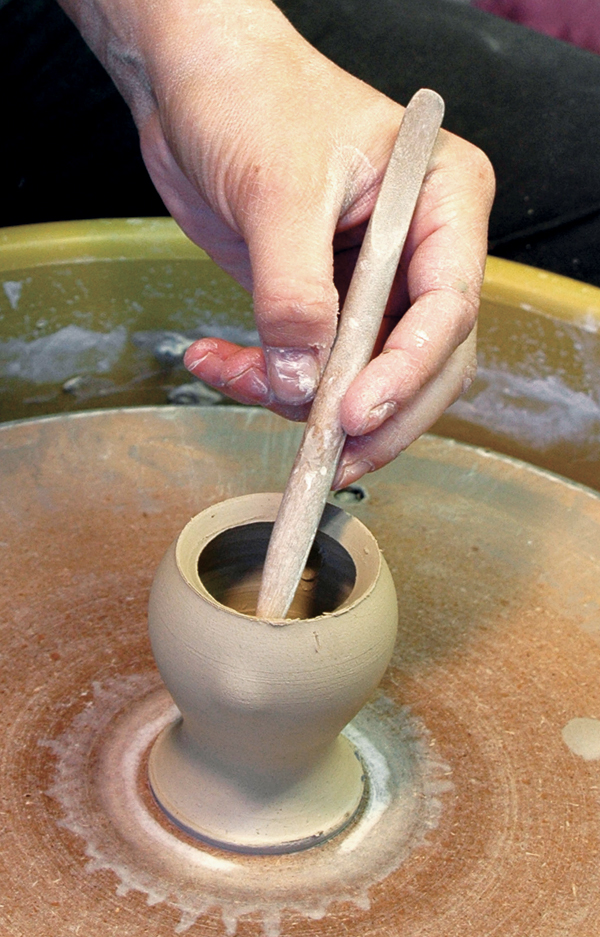
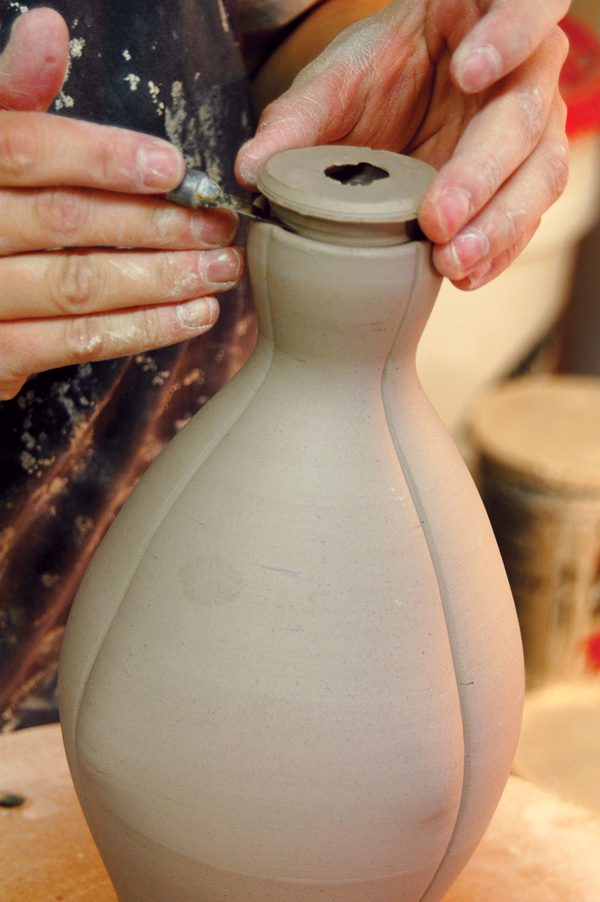
Next, use a wooden rib to impress lines on the soft leather-hard topper (7)—these lines will coincide with those already impressed on the bottle. When both pieces are at soft leather hard, score, slip, then attach the two parts together (8).
Note: When fitting the topper and the stopper together, make a beveled edge on each piece to create a nice transition.

